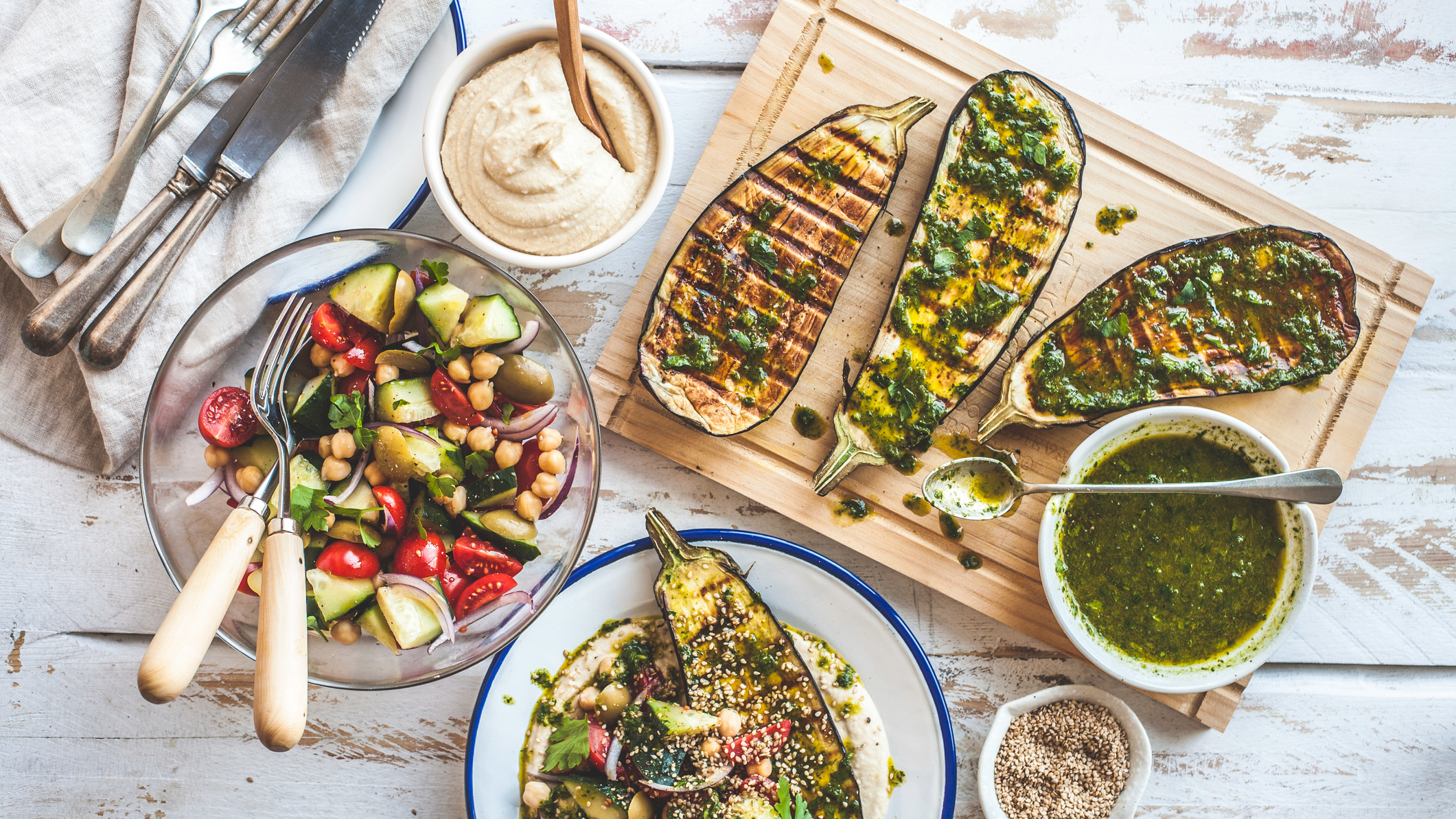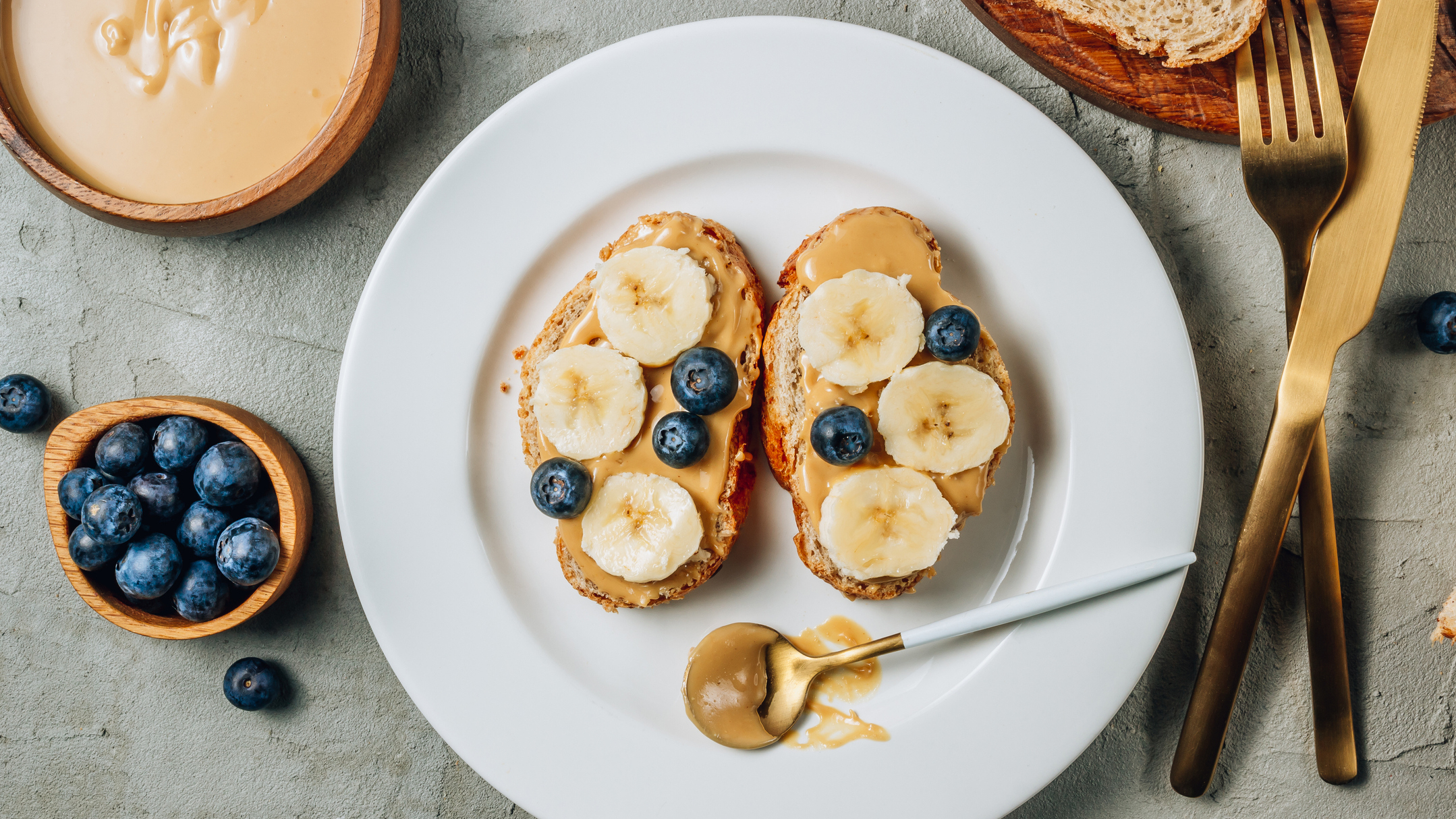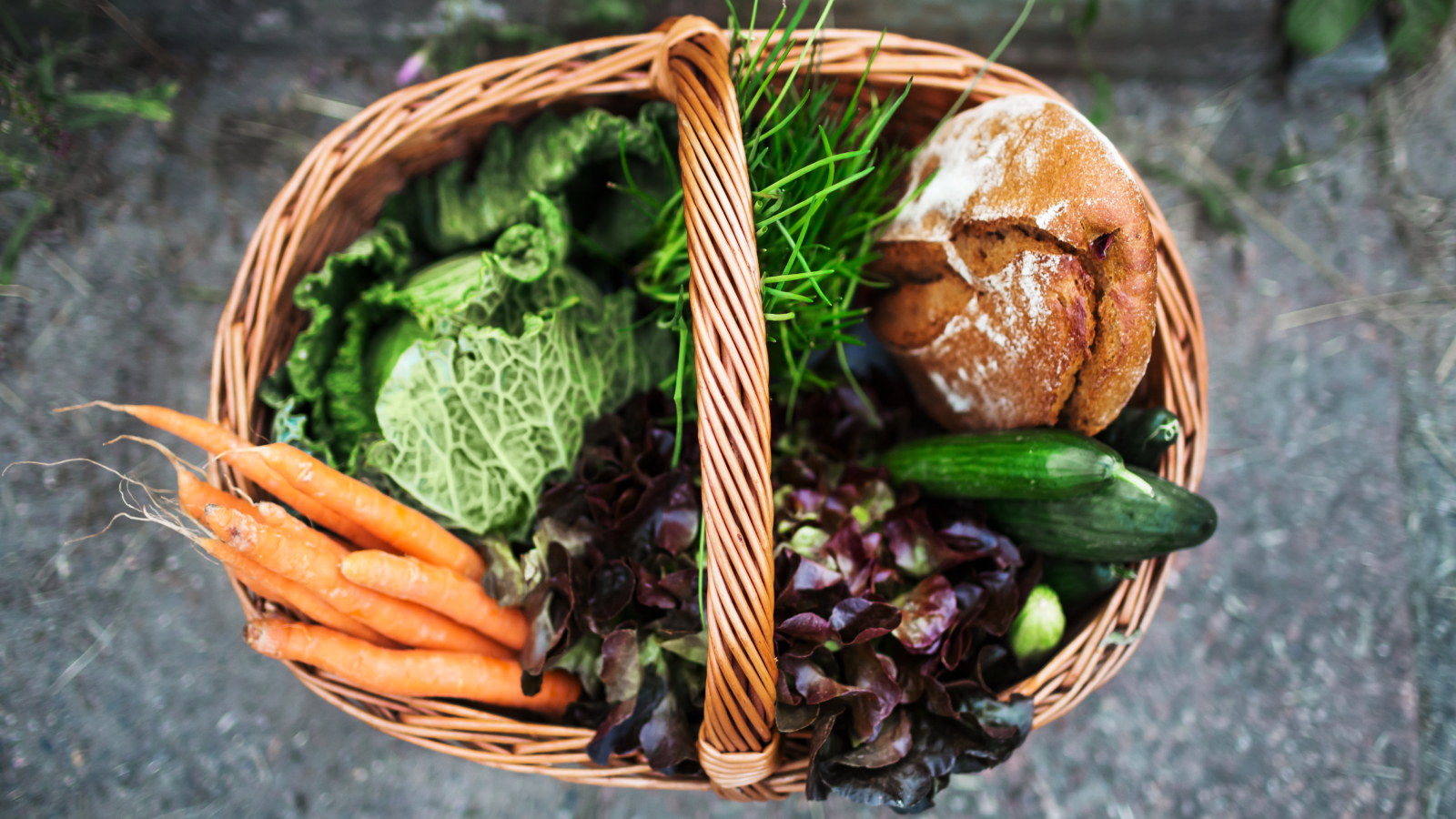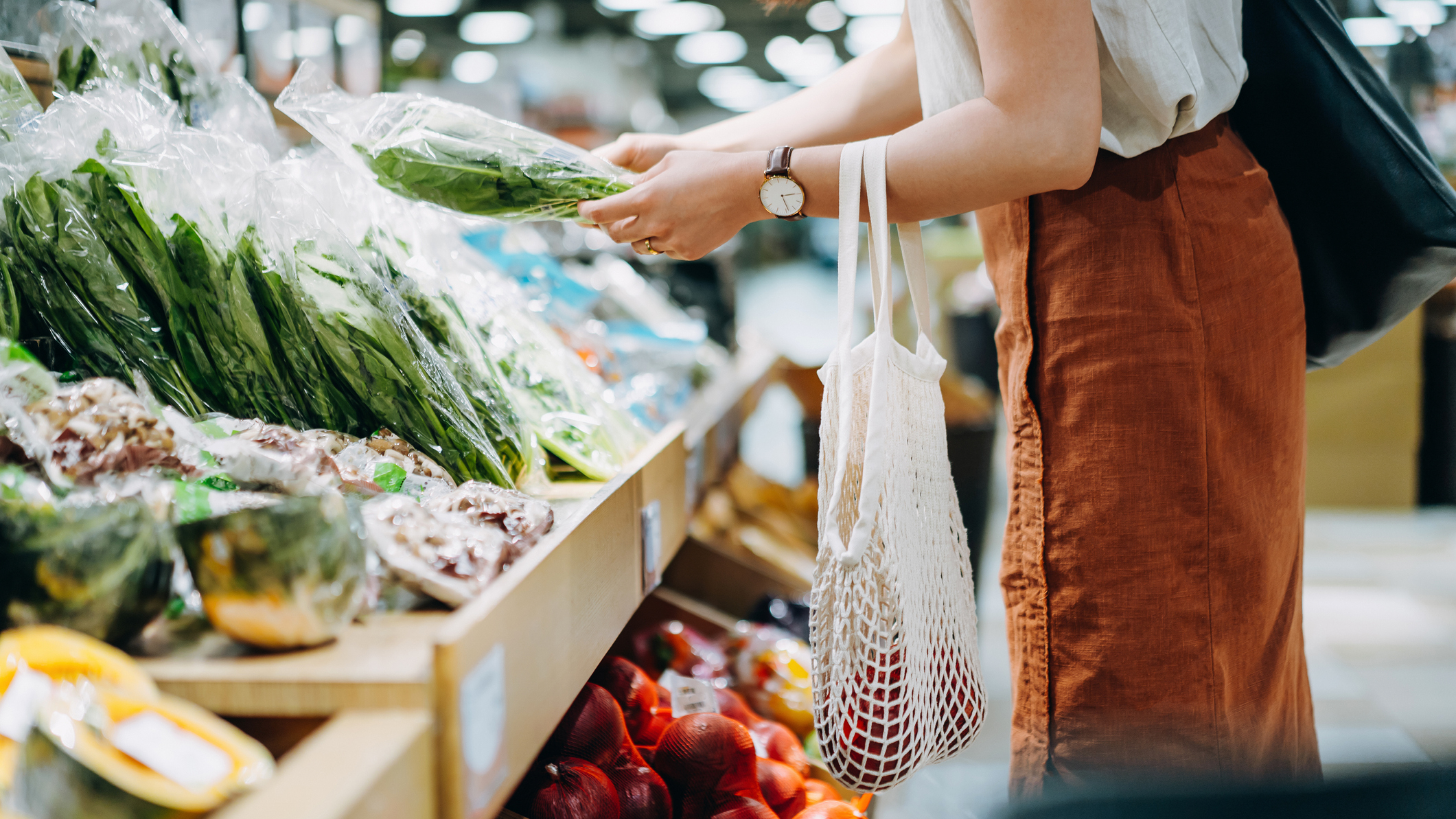Veganism and the environment—how to eat sustainably this Veganuary
When it comes to veganism and the environment, not all plant-based foods are so green after all


You might think veganism and the environment go seamlessly hand in hand. But Veganuary, in which people pledge to go plant-based for the entire month of January, isn’t necessarily the greener eating regime that many automatically assume it to be.
Although cutting down on animal products is better for the environment (helping with reducing climate-damaging greenhouse gases), what you replace them with matters. In plain terms, the air miles and production processes used to bring you your plant-based favorites—from your beloved avocados to nut butter— may still be doing the planet no favors.
As more of you than ever get set to do Veganuary in early 2022, thanks to a year in which the need to consider the environment has become more urgent than ever, we take a look at how you can ensure your vegan recipes are green in more ways than one, plus how to start a plant-based diet from scratch. We asked the experts which plant-based groceries may still be driving climate change, as well as how to make more sustainable food choices.
Does veganism help the environment?
It certainly can do. A University of Oxford study showed that a vegan diet is the “single biggest way” to reduce environmental impact—cutting carbon emissions by up to 73%—while the UN has stated that a plant-based diet can help fight climate change.
“We know that every additional plant-based day in your week reduces your total food carbon footprint by more than 10%," says Ellie Harrison, sustainability lead at meal delivery platform Allplants. "Going fully plant-based would reduce your footprint by 85%."
But why? “Studies have found that food production accounts for one-quarter of the world’s greenhouse gas emissions—and takes up half of the planet’s surface,” explains Harrison. “Meat and dairy specifically account for about 14.5% of global greenhouse gas emissions, according to the UN, and scientists say a diet shift is necessary to meet the world’s climate targets.” Part of the environmental impact is down to farming livestock. Jo Hand, the co-founder of carbon footprint expert Giki, adds, “An estimated 70% of deforestation is for agriculture, with much of the land needed for producing animal feed.”
Which vegan foods harm the planet?

“Veganuary is a great challenge for people to take on, but it is important to remember that the vegan diet isn’t necessarily the most sustainable,” says Ellie Bain, registered dietitian and senior nutritionist for meal delivery platform Gousto.
Sign up for the woman&home newsletter
Sign up to our free daily email for the latest royal and entertainment news, interesting opinion, expert advice on styling and beauty trends, and no-nonsense guides to the health and wellness questions you want answered.
Indeed, while eliminating meat, fish and dairy from your plate could make a positive difference, what you replace them with also matters. That’s because farming processes, and the air miles required to transport certain items, can actually mean plant-based produce proves just as bad in the environmental stakes.
Frustratingly, some of the worst culprits are the healthy foods that we're encouraged to munch away on when we look at how to lose weight. Out-of-season goods are another problem—blueberries and strawberries are often flown to Europe and the United States to meet our year-round demand while, elsewhere, there’s evidence that asparagus has one of the highest carbon footprints compared to other vegetables because it is transported by air from Peru. Then there are mushrooms; although they are certainly a greener, meat-like addition to our diets than the likes of beef and chicken, they require significant amounts of energy to keep them warm as they grow. A study funded by the US Department of Agriculture discovered that mushrooms emit 2.13-2.95kg of CO2 per kilogram (for comparison's sake, it's still better than the figure for the same amount of beef—around 36kg of CO2 per kilo).
How to make more sustainable food choices

1. Eat in season
This one is key. “Consuming food that is in season can help reduce carbon emissions,” says Clare Gray, registered dietitian at food delivery service Mindful Chef. “This is due to crops not requiring the high-energy input from artificial heating or lighting needed out of the natural growing season. In addition, some scientists argue that adopting a seasonality approach to food supplies may also help to decrease water stress in already water-scarce countries.”
As well as being better for the planet, it could also be better for you by warding off nutritional deficiency. “Evidence suggests that the nutrient density of fruit and vegetables is at the optimum immediately after harvest, and then declines over time," explains Gray. "Therefore, time from harvest to consumption has a bearing on nutrient quality."
So, which fruit and vegetables are in season during January? “These include beetroot, celery, cabbage, and kale,” says Rosie Millen, nutritionist at health brand KIN Nutrition. Additionally, Hannah Shipton, managing director at food delivery service Abel & Cole, recommends you stock up on leeks, parsnips, and swede. And Gray notes that apples, pears, Brussel sprouts, and squash are also in their prime at this time of year.
2. Buy local

The possibility of shopping locally, or buying local produce, is another important thing to consider. “Check the packaging of a product to see the country in which it has been produced,” says Christine Kenny, a registered dietitian (christinekennynutrition.com), of how to cut down on the air miles of your shopping basket.
Kenny notes that there are particular foods that are generally flown in, since production here is limited—but that's not to say home-grown alternatives aren't out there. “While eating nuts and seeds is important in a vegan diet, these tend to be produced abroad, so look extra closely at the origin,” she explains. “It’s the same for soya products, almond milk (and other milk alternatives), and olive oil, which are also all likely to have been imported.”
Kenny recommends going to nearby farmers' markets, noting, "That's one way to ensure that you’re definitely eating local—and it will often turn up in-season produce too.” She adds that you should make sure to look out for locally sourced cooking oils, such as rapeseed in the UK, and also local bread made from regional flour.
But how local should we be going? Dr Federica Amati, chief nutrition scientist for Indi Supplements, suggests searching for produce that's UK- or EU-grown. She notes that cult fruit avocado—which often comes from Peru, Chile, and Mexico—is also grown in Sicily and Spain.
3. Mix it up
In short: don't eat the same vegan-friendly foods all the time. “A good place to start is to increase the variety of plants that you eat,” suggests Bain. “Not only can this improve gut health, but it is also a more sustainable approach as it increases general biodiversity through spreading out the demand for certain crops.”
Indeed, if everyone is piling their plates high with the same hip produce, this places huge pressure further up the global supply chain. For instance, Kenya was forced to ban the exportation of avocados back in 2018 due to shortages in the country, while in 2013 Bolivians and Peruvians found themselves unable to afford the rising cost of their local ancient grain, quinoa.
4. Beware palm oil
You may not be familiar with it, but palm oil is likely already in your kitchen cupboards. "It's found in products such as peanut butter, chocolate, bread, and biscuits," says Dr Hannah Peck, deputy director of climate charity Cool Earth. "But its production requires major deforestation, destroying the habitat of already endangered species such as the Orangutan.”
Now, some palm oil is produced in a way that is more sustainable, and will be marked as certified sustainable palm oil on packaging. If you’re unsure while you’re browsing the supermarket, the free Giki app lets you scan a product’s barcode to find out if it contains certified sustainable palm oil or is made by a company that’s committed to switching to it. You can also find other information about its carbon footprint and packaging.
However, the environmental charity WWF believes that there has been a decline in manufacturers using sustainable palm oil since 2016. Therefore, a better bet is to allocate your grocery spending to products that avoid it entirely—there are some well-known brands have cut ties with the controversial ingredient. You can see a list here.
5. Pick oat milk

There is now a dizzying array of alternative or plant-based milk on shelves—from soya and almond to oat, hazelnut, rice, coconut, hemp, and cashew. But, even among these, there are some clear environmental winners. “Drinking oat milk over almond milk is a good sustainability hack,” notes Bain. Indeed, according to the University of California San Francisco’s Office of Sustainability, almond milk production requires lots of water and pesticide—which could impact the environment in drought-affected California, where 80% of the world’s almonds are grown.
Bain adds that you can also check eco-credentials on the packaging of alternative milk by looking for the B Corp Certification stamp, which measures a company's entire social and environmental performance.
6. Go homemade
You don't have to be a pure consumer—why not get outdoors and work your green-fingered instincts? “Grow your own fresh produce,” suggests wellness and nutrition expert Penny Weston (in fact, why not try to cultivate some of these healthy herbs in your garden). “Or in January you can forage for acorns that you can eat when ripe, beech nuts, blackberries, and chestnuts.”
Additionally, making plant-based snacks (like this lemon and coriander hummus for a dip) at home is also greener. “There may be a wide range of vegan snack bars, protein balls, and smoothies available in shops,” says Weston. “But, to avoid the packaging, try making alternatives at home and storing them in the fridge.”
On the subject of packaging, Harrison notes that it typically represents less than 5% of the environmental impact of food—and does an important job of protecting produce in transit, reducing damage and waste. “Also, to add to the mind-boggling element of eating sustainably, even food unpackaged on shelves will have been packaged in transit,” she reveals. “So definitely prioritize plant-based, but if you can make some cuts to the number of plastic bags you use at the supermarket or opt for loose apples, then that's an added bonus!”
7. Reduce waste
It may seem obvious, but reducing the amount of food that ends up in the bin can make a big difference. "If you find yourself throwing out lots of fruit and veg, buy less of it and opt for canned or frozen options that last longer, too," recommends Dr Amati.
"Make a plan for the week so you know roughly what you need," she continues. "Also, remember to eat the whole plant—the green leaves on a cauliflower are polyphenol-rich and really tasty, and you can use tougher outer layers of leeks and onions to make soups. Additionally, don’t peel fruits—simply wash them thoroughly before eating—and if they go soft, make a crumble or stew them to make fruit spreads." Sounds delicious.
8. Consume pulses
Eating sustainably needn’t always be about cutting out less-than-green items, but also adding in the ones that are great for the planet. For instance, filling up on pulses—which include lentils, chickpeas, and beans—is smart in multiple ways. “They're a great source of protein and fiber as well as being one of the most sustainable foods,” points out Bain. “Their production uses minimal water to grow, improves soil fertility, and reduces dependence on energy-intensive fertilizers.”
Now you've got Veganuary sussed, why not start to reduce the climate impact elsewhere in your life? Sustainable swimwear anyone? You can also take a look at our guide to sustainable clothing brands and when to be wary of greenwashing.
w&h thanks Ellie Harrison, sustainability lead at Allplants, Jo Hand, co-founder of Giki, Ellie Bain, registered dietitian and nutritionist for Gousto, Clare Gray, a registered dietitian at Mindful Chef, Rosie Millen, nutritionist at KIN Nutrition, Hannah Shipton, managing director at Abel & Cole, registered dietitian Christine Kenny, Dr Federica Amati, chief nutrition scientist for Indi Supplements, Dr Hannah Peck, deputy director of Cool Earth, and wellness and nutrition expert Penny Weston from welcometomade.com, for their time and expertise.

Lauren is a freelance writer and editor with a decade of print and digital journalism experience. While she specialises in covering health and wellness topics - ranging from nutrition and fitness, to women’s health conditions and mental wellbeing - she has written across a diverse range of lifestyle topics, including fashion, beauty, interiors and travel.
In addition to writing for Woman & Home and sister title Homes & Gardens, Lauren's work has also been published by Women’s Health, The Times, Daily Telegraph, Elle, Cosmopolitan, The Guardian, Marie Claire, Body + Soul, Stylist, Glamour, Grazia, Red, Dazed Digital, Yahoo Life, The Sun’s Fabulous, Get The Gloss and Hello! among others.
-
 The eye cream Reese Witherspoon uses to banish 'concealer creasing' and puffiness was already a bargain - now it's on sale
The eye cream Reese Witherspoon uses to banish 'concealer creasing' and puffiness was already a bargain - now it's on saleThe inexpensive eye cream Reese Witherspoon uses to reduce puffiness, dark circles and creases in her concealer is even more affordable than usual today.
By Charlie Elizabeth Culverhouse Published
-
 Cat Deeley's simple approach to self-care makes it so easy to feel good every single day
Cat Deeley's simple approach to self-care makes it so easy to feel good every single dayNo matter how little free time you might have
By Charlie Elizabeth Culverhouse Published